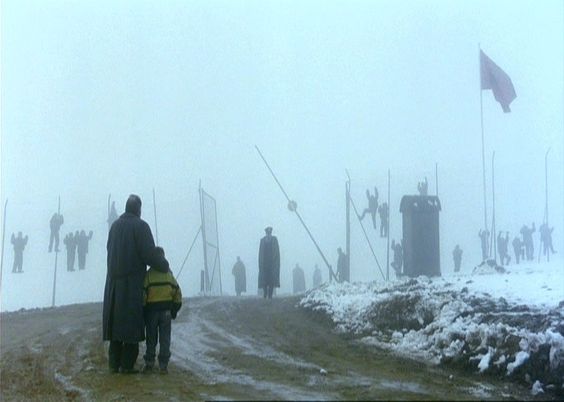

There came the Angel of Death...
( Heinrich Guggenheimer, The Scholar's Haggadah (Lanham: Jason Aronson, 1998), 146. Emphasis added.)

The Church integrates the future as the possible End of the World within its organization of time; it is not placed at the end point of time in a strictly linear fashion. The end of time can be experienced only because it is always already sublimated in the Church. The history of the Church remains the history of salvation so long as this condition held.
(Reinhart Koselleck, Futures Past)
"Ecclesia" in our context does not refer to any one worldly ecclesiastical institution. In its worldly configuration, it is simply the motor by which the future embeds itself in the present as does a parasite in flesh. It is the unidirectional transfiguration of the present into the future within the present. In Valentinian gnostic literature, Ecclesia (manifest in fullness) is reduplicated into emptiness as seeds of the heavenly archetype. Through this lens we may view Apocalypse as a vertical dyad. In reality we participate in the Ecclesia of becoming-emptiness/emptying-out (of kenoma), but in virtuality we participate in the Ecclesia of becoming-fullness/filling (of pleroma). It cannot be ignored, either that Ecclesia is inextricably bound to Anthropos. Together they constitute the basest Aeon. The existence-for-Apocalypse generated and mediated by Ecclesia-as-seed is embodied in Anthropos via Ecclesia's activity as a conduit. Through the Church, Man (similarly reduplicated) is rendered apocalyptic.
The real flow of eschatology from the kenotic Ecclesia to the kenotic Anthropos is, of course, reflected into the virtual. In pleromatic fullness, however, this flow engenders the ever-present Apocalypse in lieu of the katechon. In the virtual, the katechon is always a thing of the past. In fact, this is the only way one can define virtuality. In the regime of reality Apocalypse is always, as Koselleck remarks, sublimated in the Church, but this lends itself to the fugitive immanence of Parousia in Man-the-Church.
This hidden Parousia is manifest as Logos. The absolute internal integration of the aeon into which it incarnates—Man-the-Church—is the self-emptying Corpus (the animal flesh derivative of Nefesh Behamit) that accepts into itself the becoming-fullness of Logos. Usefully, we can map these categories onto Kant’s sensibility and reason. The Logos of Man-as-Church is the manifest transcendental subject in its inextricable unity with its immanently-externalized animality. Finally, then, sovereignty can be described as the transcendental subject’s dismissal of its animality insofar as animality is an ontological orientation toward Apocalypse. In dismissing Apocalypse, however, the transcendental subject dismisses itself insofar as it is immanent in rationality only as long as it is based in a providential chronology.
God mutilates Himself...